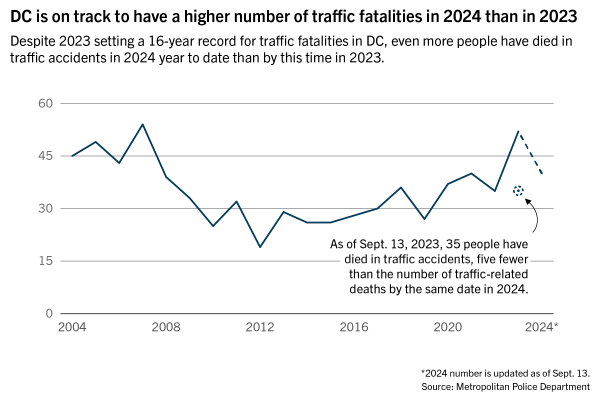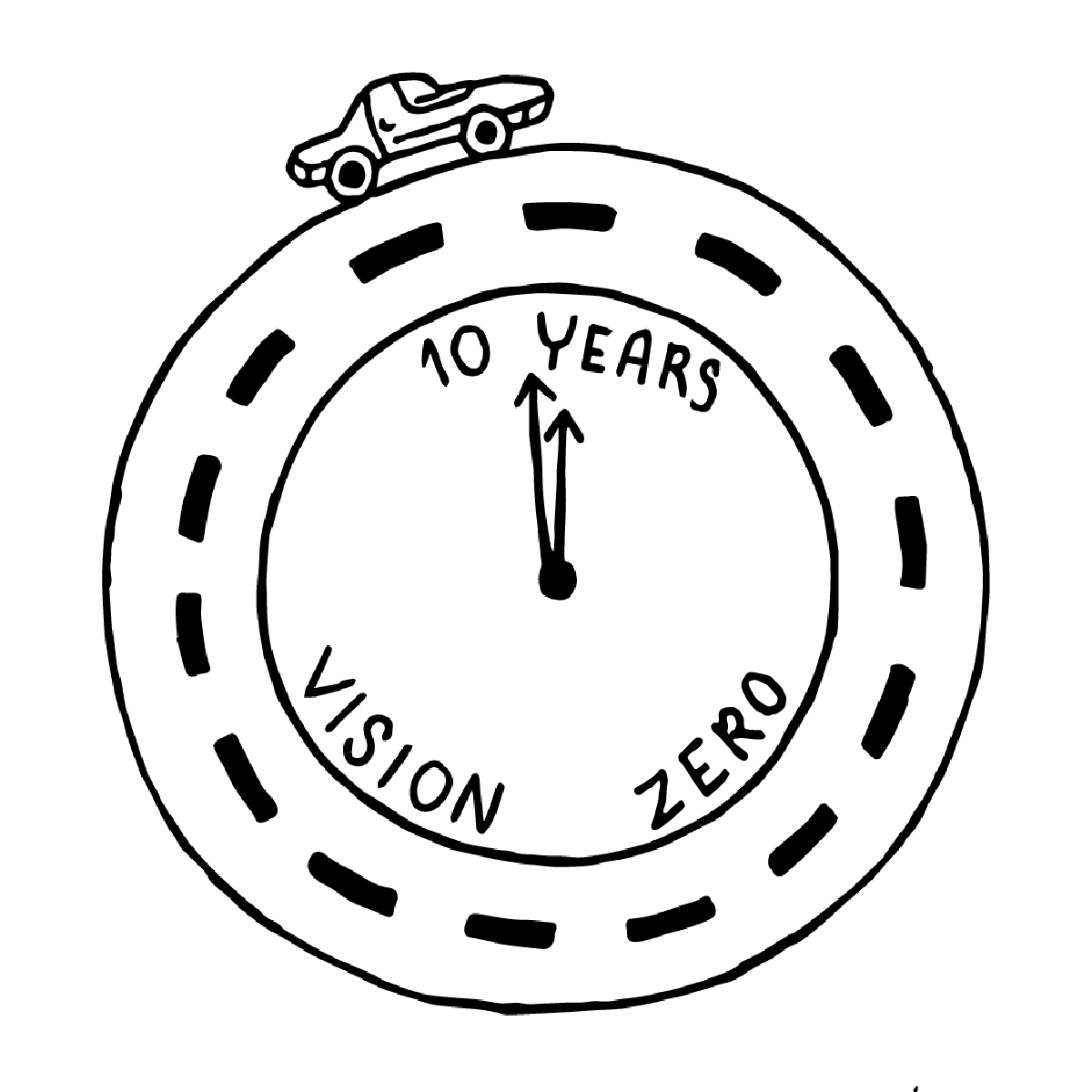Back in 2014, Mayor Muriel Bowser made a promise to D.C. residents: In a decade, traffic deaths in the District would be reduced to zero. But in 2024, D.C. hasn’t eliminated traffic deaths or even cut them down. They’ve increased. In 2023, D.C. hit a 16-year high in traffic fatalities with a total of 52 deaths, double the number from 2014, when D.C. first adopted the plan. And according to a Washington Post analysis, we’re on track to hit the 52 mark from last year, with the city recording 40 deaths so far in 2024. This time last year, we had reached 35 deaths.
The District has focused on enforcement, with about 467 traffic cameras since 2014 and plans to add more in eight locations next year. Last year, D.C. officials decided to start sending targeted messages to high-risk drivers. But evidence shows that the enforcement-heavy focus may not be enough. The District is limited in ability to enforce photo-enforced tickets because of a lack of regional legislation to enforce automated tickets for nonresident drivers. And according to the Post’s analysis, nine of the 33 people killed in traffic crashes so far this year died within 250 feet of a traffic camera.
The city has made some steps to change road design and take safety precautions that slow down drivers, like speed limit decreases, adding stoplights and bike lanes and implementing limited revisions to arterial lines, like a couple of bus lanes on Georgia Avenue in 2016 and an interim revision on Florida Avenue in 2019 that added bike lanes on each side and reduced car lanes. But there hasn’t been much more progress to fundamentally — and permanently — change these roads.

Some of the government’s most drastic steps to curtail dangerous driving have fizzled, killing bike lane projects on high-risk roads, like Connecticut Avenue, and delaying project completions, like on Florida Avenue. Additional plans were made for Connecticut Avenue, like adding curbs and left turn lanes, but the delayed project will still take a while to complete.
D.C.’s infrastructure, from small lanes to several one-way routes or traffic circles, can make driving in D.C. complicated and frustrating, allowing for more accidents and high-risk driving. D.C. officials have tried to identify locations that attract the most accidents or fatalities, focusing on the top 15 from June 2016 to July 2021, ensuring there are emergency first responders to help avoid fatalities or serious injuries.
But the city doesn’t seem to have the funding to implement bigger projects for Vision Zero, failing to fully fund the program in 2020 and pushing back larger initiatives passed by the D.C. Council in favor of cheaper ones in 2023. In fact, the mayor wants to use revenue from traffic cameras to help reduce D.C.’s four-year budget gap, redirecting the money that the Council had voted should go to Vision Zero.
These short-term plans don’t truly address D.C.’s main traffic safety issues, its layout and road design. The city must stabilize the fragile financial foundation on top of which it created Vision Zero, accounting for recent budget shortfalls and propose revisions to the plan that bring effective road safety revisions into focus.
Addressing these deadly issues, from D.C.’s traffic infrastructure to the culture of its commuters, is something that takes time and can’t be resolved immediately. But ambitious proposals call for realistic amendments, especially as the number of traffic fatalities is projected to climb, and we hope to see a plan that considers the city’s future in its next update come January.
The editorial board consists of Hatchet staff members and operates separately from the newsroom. This week’s staff editorial was written by Opinions Editor Andrea Mendoza-Melchor based on discussions with Culture Editor Nick Perkins and research assistant Carly Cavanaugh.



